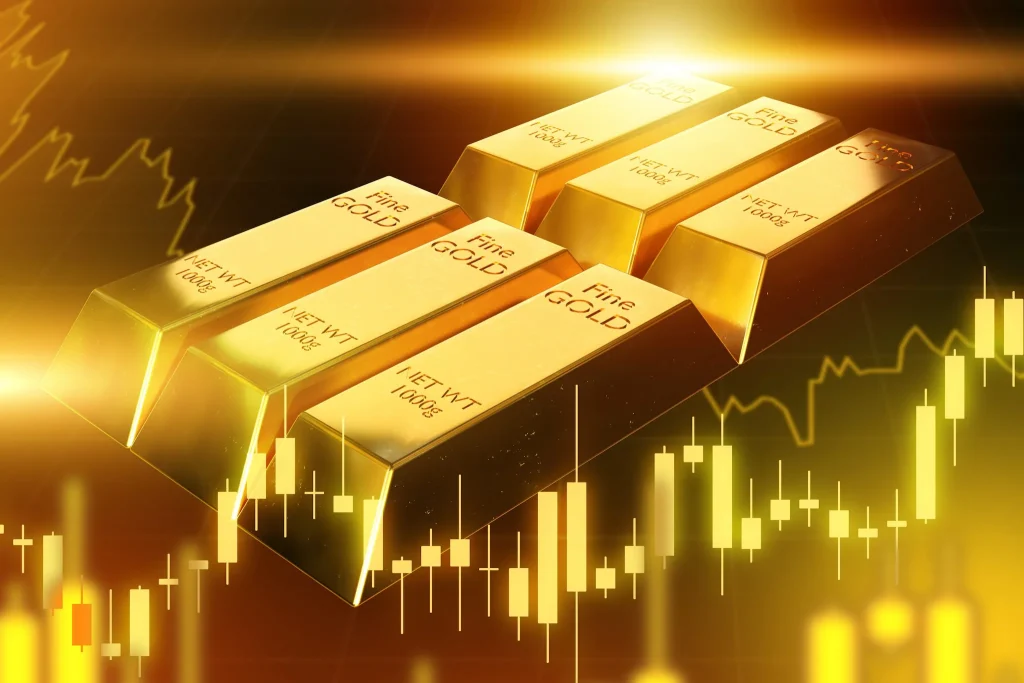Gold has soared to an unprecedented peak of $3,200 per ounce, marking a historic milestone and offering investors substantial returns during intensifying global trade tensions between the United States and China. This surge underscores gold’s enduring appeal as a safe-haven asset, especially during times of economic volatility and geopolitical friction.
Since the beginning of the year, gold has climbed more than 20%, driven primarily by aggressive purchasing from foreign central banks. A combination of a weakening U.S. dollar and rising fears over the U.S.-China trade conflict has further fueled demand for the precious metal. With inflation concerns looming and markets on edge, investors have increasingly turned to gold as a reliable hedge.
Financial analyst Axel Adler Jr. has projected that gold prices may rise even further if trade hostilities between the U.S. and China continue to escalate without resolution.
Bitcoin Gains Ground Alongside Gold
While gold dominates the headlines, Bitcoin—often referred to as “digital gold”—has also experienced notable gains, reflecting its growing status as an alternative hedge against global economic uncertainty.
Over the past 12 months, Bitcoin has risen by 16%, reinforcing its position as a resilient digital asset amid market turbulence. At present, Bitcoin is trading at approximately $81,910, reflecting a 10% rebound since April 9. This rebound followed President Donald Trump’s announcement of a temporary 90-day pause on tariffs, which notably excluded any additional duties on Chinese imports.
Despite this recent recovery, Bitcoin remains well below its all-time high of $109,000. Nonetheless, the cryptocurrency’s resurgence signals renewed investor interest, particularly among those seeking to diversify away from traditional financial instruments during times of instability.
China’s Tariff Hike Deepens Trade Standoff
As the trade dispute intensifies, China has imposed a dramatic increase in tariffs on American imports, raising them to a staggering 125%. This significant escalation highlights the seriousness of the ongoing economic conflict between the two superpowers.
According to Chinese authorities, the tariff adjustments comply with the country’s Customs Law, Tariff Law, and Foreign Trade Law. At the same time, Beijing has accused the U.S. of practicing “unilateral bullying” and violating international trade rules. Chinese officials have signaled that they do not plan to respond to any additional tariff increases from Washington, citing the diminishing competitiveness of U.S. goods in the Chinese marketplace.
The prolonged nature of the dispute has already disrupted several critical sectors, including agriculture, technology, and energy. As both nations remain entrenched in their positions, the likelihood of a swift resolution appears increasingly slim.
Global Consequences and Investor Outlook
Economists warn that the latest round of tariffs could severely disrupt global supply chains, drive up consumer prices, and worsen inflation in both the U.S. and China. The ripple effects are also being felt in the broader investment landscape, particularly within the cryptocurrency sector. For example, the cost of mining equipment has surged due to trade-related restrictions and rising production costs.
Market analysts urge investors to closely monitor developments in the trade conflict, noting that any further deterioration in U.S.-China relations could trigger more profound consequences for the global economy. With central banks adjusting their policies and markets reacting swiftly to geopolitical cues, strategic investment decisions have become more critical than ever.
As gold reaches all-time highs and Bitcoin regains momentum, the world remains on edge. Whether the trade war de-escalates or plunges deeper into confrontation will have far-reaching implications for financial markets and economic stability worldwide. For now, investors are placing their bets on resilience—seeking safety in gold, Bitcoin, and other hedging assets as the world’s two largest economies continue their contentious standoff.












